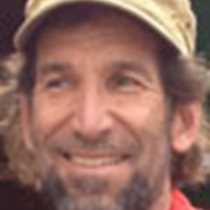We knew the day would come when we would have to turn northward and return to Tierra del Fuego, the region from which we started. The Antarctic Peninsula, the South Shetland Islands, and ice in many forms were left astern late last night as we sailed out into the open ocean and the rolling seas of the Drake Passage. With a mild start to the crossing, we had time to reflect on the wide experiences and diverse landscapes of our expedition. We enjoyed a number of presentations and prepared ourselves for the passage as we contemplated the conundrum: how to fit all our gear back into the luggage from which it came?
- Daily Expedition Reports
- 28 Dec 2022
The Southern Drake Passage, 12/28/2022, National Geographic Resolution
- Aboard the National Geographic Resolution
- Antarctica
Robert Edwards, Naturalist
Growing up in the Appalachian foothills of the Garden State, Rob instinctively knew it made a lot more sense to head over the hill into the fields, forests, lakes, and streams behind his house, rather than down the road to the shopping mall in front ...
Read MoreShare Report
Antarctica and Patagonia: Legendary Ice and Epic Fjords
VIEW ITINERARYRelated Reports
11/14/2021
Read
National Geographic Explorer
LeMaire Channel and Pleneau Island
Morning began early on National Geographic Explorer with a beautiful cruise through the LeMaire channel. As the ship passed beyond the southern end of the channel, it was surrounded by ice with spectacular views of sea ice and icebergs. The Zodiacs were soon lowered to take everyone ashore at Pleneau Island for up close encounters with penguins. In the afternoon, Zodiacs zipped around grounded icebergs as everyone was treated to a cruise through monumental ice sculptures created by glaciers. The day ended as it began, with a trip through the always awe-inspiring LeMaire channel.
11/9/2021
Read
National Geographic Explorer
Jackson Bay, Karukinka Natural Park & Canal San Gabriel
During a rare, perfectly still and windless morning, we landed at Jackson Bay, in Admiralty Sound to visit the most remote section of Karukinka Natural Park, a private protected area managed by the Wildlife Conservation Society. At 330 hectares, this area protects some of the southernmost forests, grasslands and peatlands of the planet together with a vast array of wildlife including several endemic bird species and a colony of breeding elephant seals. We hiked through large stands of primeval forest to get to a waterfall that drains the overflow of some alpine glaciers still blanketing the peaks that flank the valley we walked toward.







